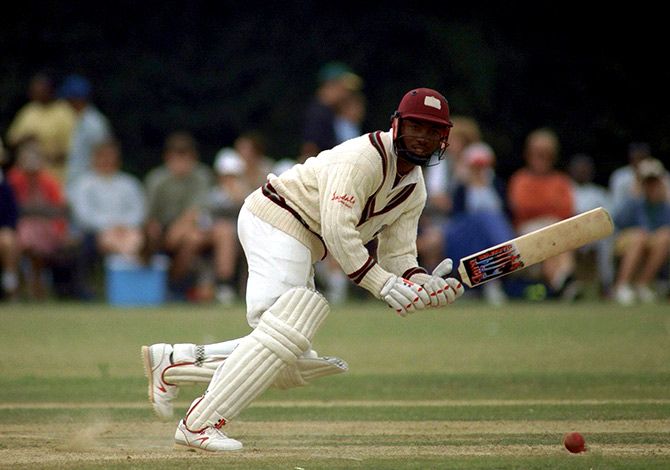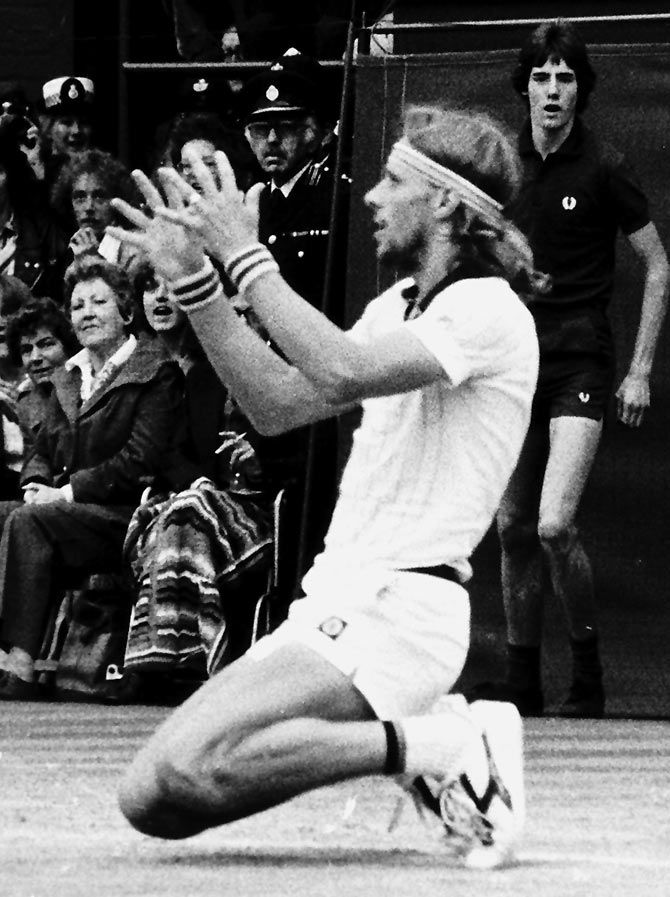 | « Back to article | Print this article |
'Can Tendulkar recreate the magic of his youth?', asks advertising guru Sandeep Goyal.

Sunil Gavaskar is said to be considering the launch of a Legends World Series with the blessings of the BCCI.
The League will bring back the likes of Sachin Tendulkar, Virender Sehwag, Brian Lara, Brett Lee, Jonty Rhodes and Tillakaratne Dilshan to the cricketing crease.
And many more of the retired tribe.
But is the nostalgia marketing of veterans cricket really all that compelling a proposition?
Lots of Tendulkar fans and Sehwag die-hards will surely queue up to see their heroes once again flick, cut, drive, pull, sweep and loft the red cherry out of the stadium.
But will the 46-year-old Tendulkar be able to recreate the magic of his youth?
Will Sehwag at 41 have the same reflexes and agility as when he was half that age?
Will a 50-year-old Lara be able to regale the crowd with his stroke-play?

Eight countries including Pakistan, Australia, New Zealand, England, South Africa, Sri Lanka, Canada and Wales participated in the 50 overs a side cricket Veterans World Cup last year in Sydney.
The next edition will take place in Cape Town, South Africa in 2020 with the West Indies, India, Namibia and Zimbabwe joining the line-up.
But from all accounts the Sydney tournament was at best a tepid affair... with sparse attendance in stadiums, low television viewership and lukewarm sponsor response.
Will Gavaskar's tournament be able to perform any better?

The repackaging and the restaging of these old heroes would come under the umbrella of nostalgia marketing.
Nostalgia inspires fans to spend their money promising an immediate return in the form of happy memories.
Immersing yourself in nostalgia is like wrapping yourself in a comfortable blanket of 'the good old days'.
Nostalgia, research shows, can literally make people feel 'warmer'.
But warmer for how long or how frequently?
Nostalgia marketing has worked pretty well in tennis and golf.
The ATP Champions Tour for former tennis professionals has brought together many of the greatest tennis players in history, getting the likes of John McEnroe, Bjorn Borg, Pete Sampras, Ivan Lendl and Jimmy Connors to continue entertaining fans much beyond their prime, encashing years of accumulated brand equity and sporting goodwill.
Similarly, the PGA Tour Champions is a men's professional senior golf tour which is very popular in the US.
Even Jack Nicklaus joined the Tour when he became eligible in January 1990, and by April 1996 had won 10 tournaments, including eight major championships, further buttressing his reputation as a golfing legend, and keeping his fandom alive, entertained and involved.

Last month saw an announcement from Bajaj that they are reviving and bringing back the old warhorse, the Chetak scooter.
Albeit as an electric vehicle.
The Chetak brand was introduced in 1972, and ruled Indian roads for nearly 25 years.
It was in fact the hero of Hamara Bajaj campaign.
Unfortunately, the Chetak started to taper off, and was eventually discontinued in 2006.
Why has Bajaj decided to dust the cobwebs and give the Chetak a new avatar?
Perhaps because it believes that the brand still has deep reservoirs of consumer goodwill... recognition and recall superior to a new entrant.

About a year ago, Mahindra did something similar.
They relaunched the Jawa motorcycle.
The Czech brand was originally introduced to India after World War-II.
Local production was started in 1961 by a company called Ideal Jawa.
The brand was discontinued in 1971 when Ideal Jawa started making motorcycles under the Yezdi brandname.
The company stopped production in 1998 faced with dwindling demand and poor financials.
Last year, Classic Legends, a Mahindra entity, signed a brand licensing agreement with the Czech Republic-based Jawa Moto to revive the brand in India.
The relaunch in November last year has seen a few stores being opened, but there is no visible excitement surrounding Jawa as such.
This is in contrast to the kind of frenzy witnessed when the Royal Enfield was brought back in the 1990s.
Though often tagged as 'the oldest global motorcycle brand in continuous production', the Enfield, a brand of Redditch UK, had kind of sputtered and nearly stopped about 25 years ago till Eicher stepped in to revive its fortunes.
So successful has been the re-launch of the Royal Enfield that in 2015 it surpassed the global sales of Harley-Davidson, and today sells in over 50 countries.

Revivals have happened with the likes of fast-food brand Nirula's and milk-shakes vendor Keventers too.
Keventers especially has done really well with nearly 250 stores nation-wide.
There has been talk too of bringing back Campa Cola.
Nostalgia works when the brand itself has intrinsic goodness and a proposition that is seen to have enduring customer value.
Just the repackaging of old, and fond, memories of the past in a more contemporary framework may not work.
Which is why Gavaskar will have to ensure the focus of his league is good and entertaining cricket, not just legends on show.
